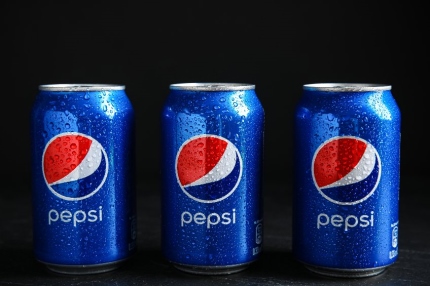Once again, technology stocks are grabbing the financial headlines. They have powered most of the gains in the S&P 500 in 2023.
In fact, Apple and Microsoft alone now account for a record 13.5% of the index—the most ever for the top two stocks.
While it’s tempting to buy big tech right now, the safer investing route—and the one I prefer is sticking with—is consumer staples companies that have strong brands.

Consumer Goods Companies Bonanza
Consumer goods companies had a remarkably strong 2022, despite a sharp rise in raw material costs and stretched household budgets. In fact, consumers swallowed big price increases in 2022 without batting an eyelid.
Companies in the sector hiked prices by 10% on average in the fourth quarter of 2022, according to Bernstein analysis, with volumes a mere 2% lower—and that trend has continued into 2023.
Most food and beverage companies were able to pass along large price increases in the first quarter, with sales volumes only edging down.
Here are just a few examples cited by the Financial Times: At AB InBev, North American beer prices rose 5.6% while volumes fell slightly. Kraft has long struggled with sales volumes, and in the first quarter they fell 6%—but prices were up 13%, and margins are widening. And Kellogg’s, best known for cereal, had a 14% benefit to sales from its price mix. Its management said it has been surprised by price elasticity remaining well below historical levels.
The story seems to be the same almost everywhere in the consumer staples sector. Companies up and down the value chain are passing on big—sometimes very big—inflation-plus price increases, and consumers are willing to pay. There is precious little evidence of trading down to cheaper alternatives.
This is a testament to the power of brands. But only companies able to maintain the luster of their product names can pull this off consistently: consumers will pay more for trusted products, which then deliver higher profits to the brand owner, cushioning it against rising input costs. This contrasts with generic products, churned out in high volumes at low margins.
A brandholder has “pricing power”—a Holy Grail for most businesses. And, as long as a company can maintain the quality of its brands, it will retain pricing power. After all, quality never goes out of style.
Let’s now take a look at one such consumer brands powerhouse, PepsiCo (PEP).
Pepsi’s Pricing Power
PepsiCo, founded in 1898, produces and sells food, snacks, and beverages around the world. In addition to its eponymous soda, as well as other beverages including Mountain Dew, Gatorade, 7UP, Tropicana, and various bottled water products, the company also owns food brands including Lay’s, Ruffles, Doritos, Tostitos, Cheetos, Quaker Oatmeal, and Rice-A-Roni. And, PepsiCo also provides tea and coffee products through a joint venture with Starbucks and Unilever.
On average, 11 of the 15 top-selling products in convenience stores come from PepsiCo, and Lay’s is the world’s best-selling snack food brand, having expanded sales from just $100 million fifty years ago to $30 billion today. Overall, PepsiCo ranks first in the $200 billion global savory snacks market, controlling 22% of the market, per research firm Euromonitor.
Pepsi’s net sales should rise by about 6% in 2023 and 4% in 2024, driven by 8% organic revenue growth. In 2022, PEP’s net sales rose 8.7% due to organic revenue growth of 14.4%. Organic sales growth will be driven by price increases—the company’s effective net prices jumped 16% year-on-year in the first quarter of 2023.
I think that investors will continue to favor Pepsi given the company’s ability to raise its dividend and deliver strong growth.
PepsiCo is a defensive blue-chip name with a strong balance sheet and high degree of earnings stability. I like the power of its brands, such as Frito-Lay and Pepsi, in an inflationary environment. It gives the company the ability to successfully pass higher costs on to consumers in the form of price increases.
The company’s shares are included in the S&P Dividend Aristocrats group. In June 2022, PepsiCo raised its annualized dividend by 7% to $4.60 per share. The company also announced a 10% increase in its annualized dividend to $5.06 per share, starting with the June 2023 payment—the 51st straight year PepsiCo has increased the dividend.
Management continues to expect $7.7 billion in cash returns to shareholders, consisting of $6.7 billion in dividends and $1.0 billion in share buybacks.
Pepsi’s stock recently hit an all-time high, up 12.5% over the past year and 7.75% year-to-date. Its current yield is 2.62%, but based on its history, Pepsi will continue to raise its dividend on a steady basis every year. PEP is a buy below $200 per share.





